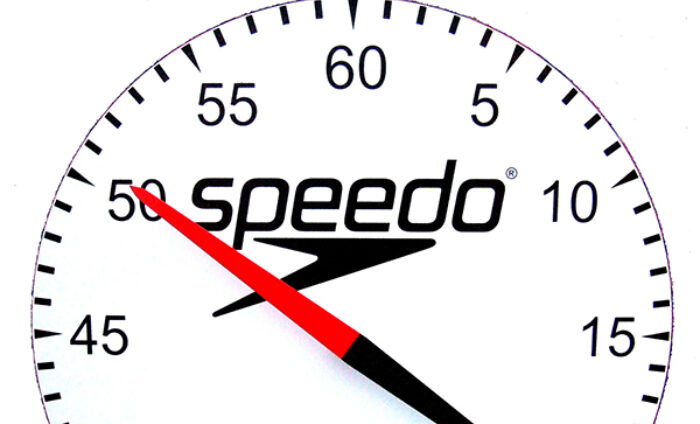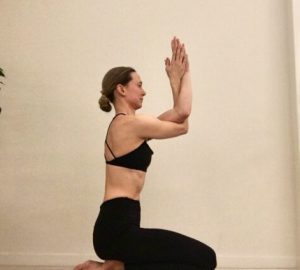
How to use a pace clock
Now that we have watches that count our lengths and strokes and measure our heart rates and SWOLF scores and calories burned you may wonder why swimmers still use a big wall-mounted clock that has only a second hand. The pace clock, as this is known, has been in use since at least the 1960s, and possibly earlier, and shows no sign of disappearing because it’s incredibly useful despite (or perhaps because of) its simplicity.
People who have grown up with swimming understand the jargon and can use a pace clock almost instinctively but if you’ve come to the sport later in life, it can be a little mysterious.
A pace clock can have a single pointer, two pointers (usually red and black, 30 seconds apart), occasionally four pointers (15 seconds apart) and sometimes a minute hand in addition to the second hand. The minute hand is mostly ignored and isn’t necessary. The clock runs continuously and will hopefully be placed where it can be seen from anywhere in the pool. Some pools will have two clocks (preferably running in synchrony) that can be seen from either end.
If you find yourself training with other swimmers or in a masters group, you will hear instructions similar to those listed below.
Timing short swims
Using the pace clock to time short swims (i.e. of less than one minute) is easy. If you’re the first swimmer in the lane and you start swimming “on the top” (when the second hand points to zero), you look at the clock as soon as you finish and see how many seconds have elapsed.
If you’re the second swimmer in the lane, hopefully you will have started “on the five past” (five seconds after the first swimmer). Simply deduct five seconds from the time shown at the end.
Note, many pace clocks don’t show numbers but each second is shown with a small mark while every five seconds are shown with a larger one.
Timing middle distance swims
Timing swims that take between one minute and two minutes is slightly more complicated, but still easy. This is a very common scenario when swimming sets of 100m as the majority of swimmers in training will take between 60 and 120 seconds. Ideally you should know roughly what time you expect to swim. Say it’s 1:40 for 100m. If you look up at the end and the clock is pointing at 38 you know the swim has taken you 1:38, assuming you started on the top. If however you were the second swimmer in the lane, the clock would be pointing at 43 when you finish.
Sometimes there may be four, five or six swimmers in the lane, but if everyone starts at a five second interval it’s very easy to calculate your swim time. In the end, you don’t need any maths. You just know where the second hand will end up.
Timing longer swims
It’s equally possible to time yourself for longer swims: 200m, 400m, 800m or even 1500m but you have to have a good sense of your pace to start with. Say you usually take around 6:30 to swim 400m. If you start swimming “on the top” you know the second had should be pointing somewhere close to the 30 when you finish. If it’s pointing at the top it probably means you’ve miscounted your lengths or totally messed up your pacing.
Keeping count of lengths
On longer swims you can also use the pace clock to help you keep track of how many lengths you have swum, but this relies on you being able to take a sneaky glance at the clock every few lengths. It’s not unheard of for swimmers to have trouble counting beyond four and it’s easy to lose track of your lengths if you’ve got 16 of them to do. You find yourself thinking: “is that eight or 10?” A quick glance at the clock will tell you, assuming you know what pace you’re swimming at! For example, if you take 90 seconds to swim each 100m in a 25m pool then the second hand should be pointing to the same spot as when you started swimming after eight lengths and 15 seconds before your start point if you’ve done 10 lengths.
Interval training
The coach says, “10x100s off 140, start on the next top.” The swimmers groan, then knuckle down and get on with the set. This means swim 100m (four lengths of a 25m pool) 10 times. You have 1 minute and 40 seconds for each swim and rest. So, if each 100m takes you 1 minute 30 seconds (or 90 seconds as swimmers often say) you will get 10 seconds rest each time. Keeping track of this on a pace clock is easy.
Say you’re the third swimmer in the lane. This means you should start your first swim when the second hand points at 10. If you take 90 seconds to swim 100m, you expect the clock to be point at 40 when you finish the first 100m. You then start the second 100m 10 seconds later when the clock points to 50. You will finish this second 100m at around 20 past and start the third one at half past. It sounds confusing but you quickly get used to the pattern and know exactly how fast you are swimming each time.
Why bother?
Keeping track of how fast you’re swimming is key to developing good pacing skills. If you’re not the front swimmer in the lane it’s easy to get lazy and leave the clock watching to someone else but this is a mistake. Try to keep track of your speed whenever you’re in the water and learn how your swim times correlate to your perceived effort. This will help you keep focused throughout a training session and give you mini-goals you can strive for each time you train in a pool. This needn’t be trying to get faster each week. You could, for example, try to improve your consistency, or practice negative splits.








